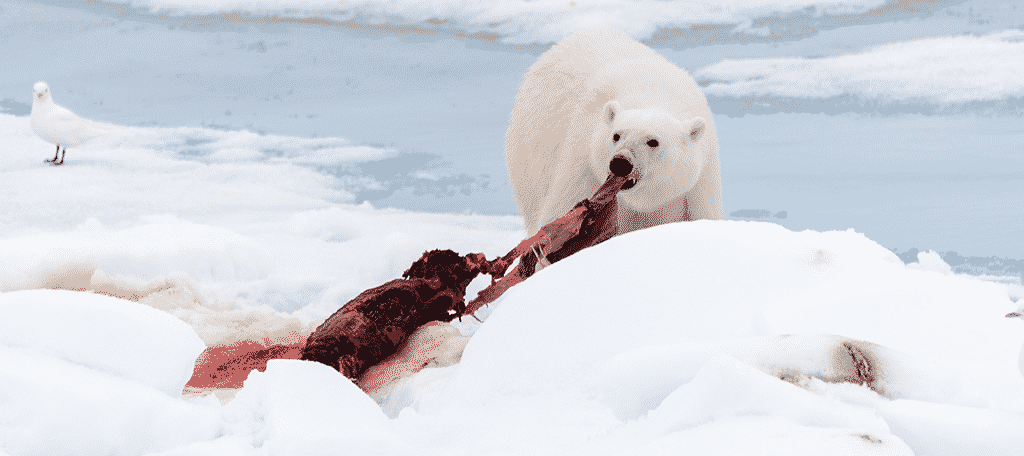A new study by Ecological Applications has found that polar bears are becoming thinner and having fewer cubs as a direct result of the ice melting. This is because sea ice is where they hunt, build nests, and mate.
When the ice begins to melt quicker than usual, that leaves them less time to feed and mate. As a result, there the bears have become thinner and there are fewer cubs.
Polar bears are very resilient animals. It was not unusual for this to occur in the past. When it did occur, the animals could rely on the fat they stored up to go on a prolonged fast. However, in 2020, it happens regularly and the bears are finding it hard to cope.
Land and Polar Bears Don’t Mix

You may assume that polar bears are more than capable of hunting on land, but you would be mistaken. Unlike other species of bear, polar bears are completely carnivores.
They hunt seals for the majority of their food. They have also been known to eat walrus, whale carcasses, and hunt bird eggs. However, due to their large size (1700 lbs), they require a lot of food and other sources do not provide enough nutrients.
Seals in these colder climates do not go on land. Instead, they hang out by ice sheets, which is why the bears hunt on them. And thus, when there is no ice, the bears suffer.
Antarctica Is Heating Up
Polar bears live in colder climates and can be found in places such as Antarctica and Greenland. However, these locations are heating up faster than anywhere else in the world due to climate change.
This is leading to massive quantities of ice melting each year in these locations and the wildlife is feeling those effects. The animals simply will not be able to cope with the rapid climate change of their regions and polar bears are not the only animals suffering.


